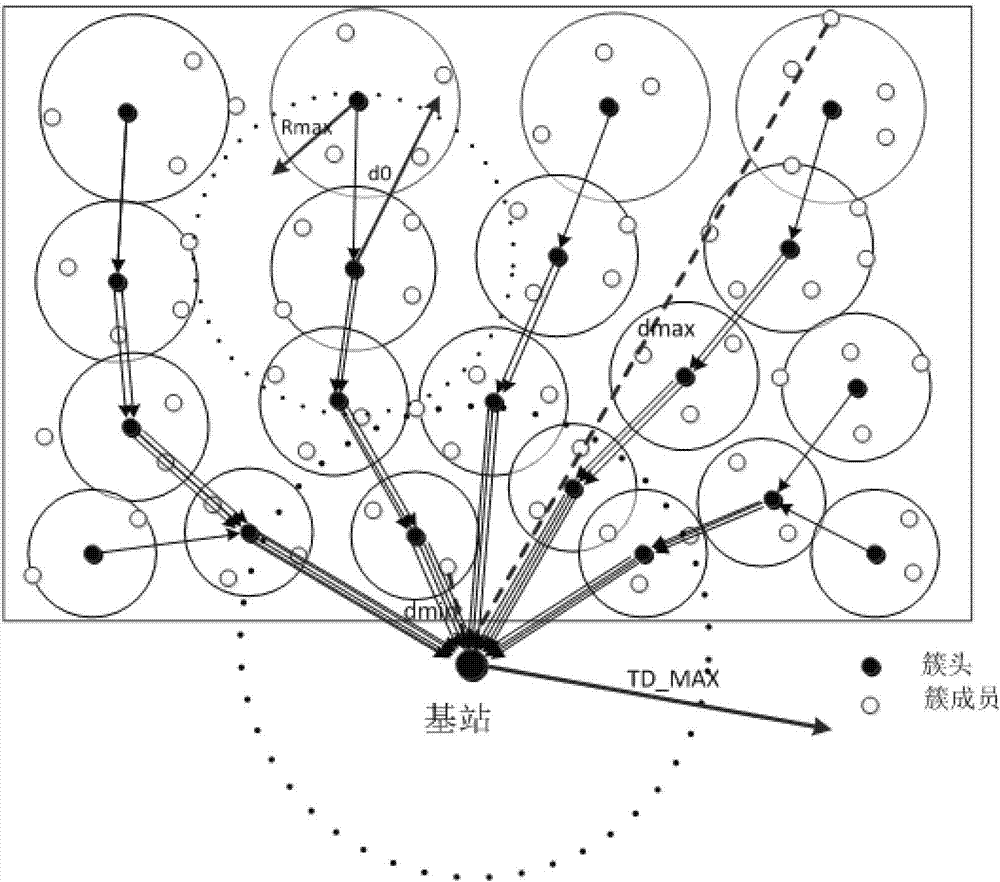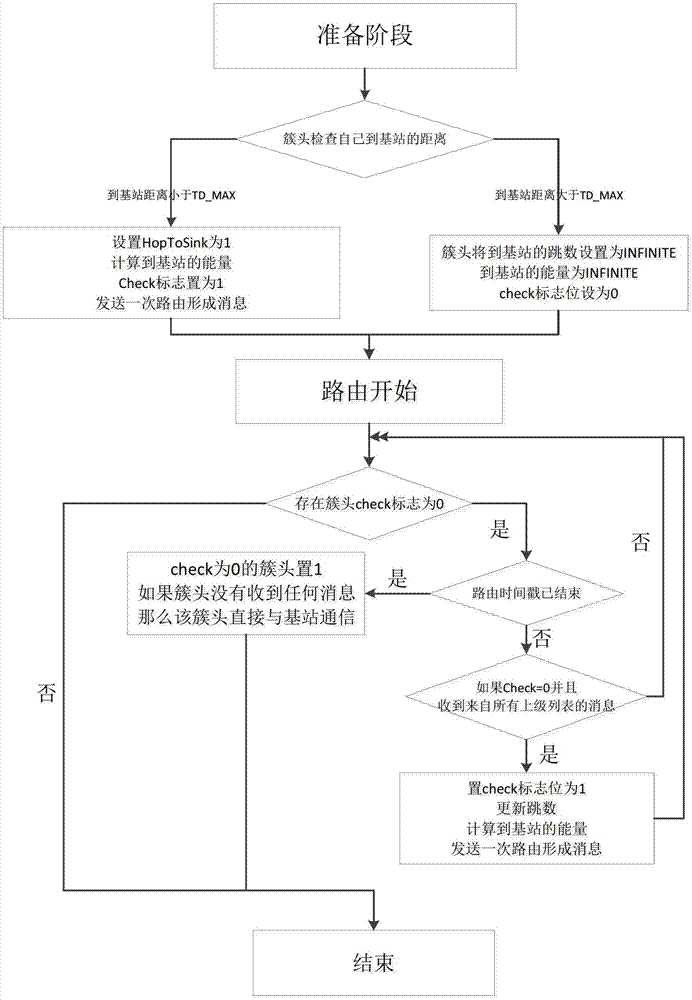Context-dependent Non-uniform Clustering Routing Algorithm
A non-uniform clustering and context technology, applied in digital transmission systems, data exchange networks, electrical components, etc., can solve the problems of uneven energy consumption of routing algorithms, finding a balance point, and fast energy consumption.
- Summary
- Abstract
- Description
- Claims
- Application Information
AI Technical Summary
Problems solved by technology
Method used
Image
Examples
Embodiment Construction
[0066] The present invention will be further described below in conjunction with the accompanying drawings and embodiments.
[0067] Any wireless sensor network protocol has application relevance and specific application background. The CRUCR protocol (Context Related Unequal-Clustering Routing protocol for WSNs) proposed by the present invention is a data transmission protocol suitable for long-distance and fixed nodes , can be applied to medical monitoring and environmental monitoring. The applicable conditions of the new agreement CRUCR are:
[0068] (a) It is assumed that the BS energy can be replenished at any time; each node knows the position of the BS, and the position of the node can be obtained by the base station through some algorithms (such as GPS, RSSI, etc.).
[0069] (b) The physical configuration parameters of all sensor nodes in the network are consistent, the initial energy is the same, and the physical location remains unchanged after arrangement. The amo...
PUM
 Login to View More
Login to View More Abstract
Description
Claims
Application Information
 Login to View More
Login to View More - R&D
- Intellectual Property
- Life Sciences
- Materials
- Tech Scout
- Unparalleled Data Quality
- Higher Quality Content
- 60% Fewer Hallucinations
Browse by: Latest US Patents, China's latest patents, Technical Efficacy Thesaurus, Application Domain, Technology Topic, Popular Technical Reports.
© 2025 PatSnap. All rights reserved.Legal|Privacy policy|Modern Slavery Act Transparency Statement|Sitemap|About US| Contact US: help@patsnap.com



